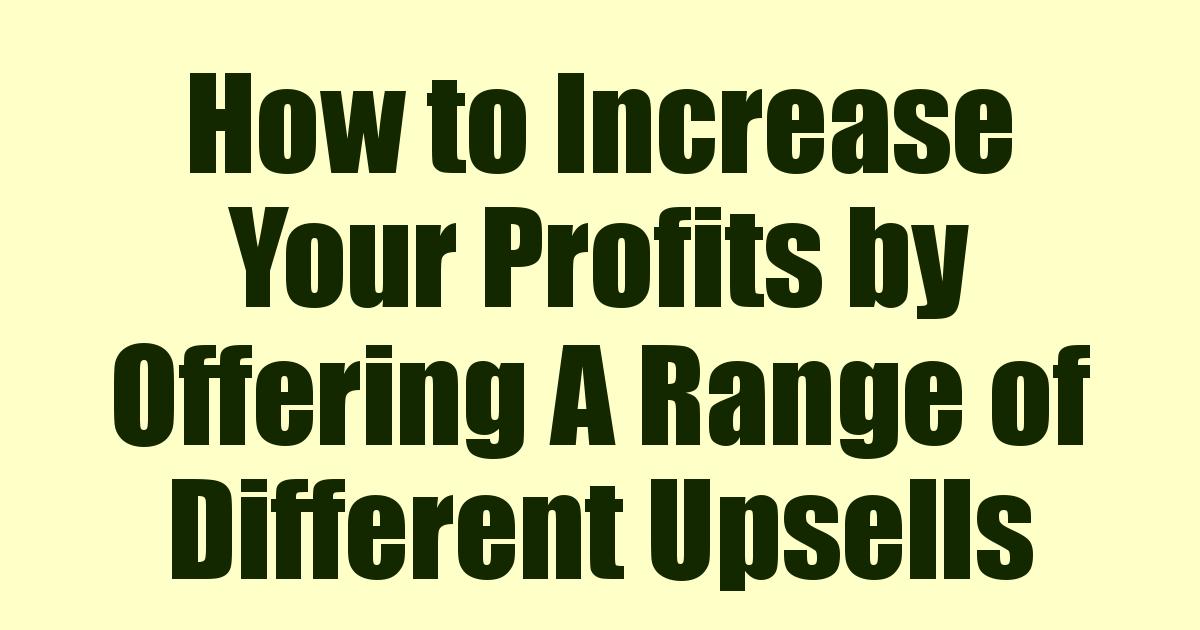 Looking for a way to capitalize on the value each customer is worth to you? An easy way to do this is by offering different upsells. Upselling is offering a complimentary or upgraded version of a product/service that a customer is currently purchasing. One of the most well known upsells can be heard when you head into your local fast food joint: “Would you like fries with that?” Even not so great upsells can add a quick 33% or more to your revenue stream. Some really good upsells or funnels can even double your initial sales or more! An upsell is a great way to increase the total value of a sale.
Looking for a way to capitalize on the value each customer is worth to you? An easy way to do this is by offering different upsells. Upselling is offering a complimentary or upgraded version of a product/service that a customer is currently purchasing. One of the most well known upsells can be heard when you head into your local fast food joint: “Would you like fries with that?” Even not so great upsells can add a quick 33% or more to your revenue stream. Some really good upsells or funnels can even double your initial sales or more! An upsell is a great way to increase the total value of a sale.
For example, if you run a dance school, and each class is $15, you could provide a number of upsells. You could offer 3 different upsells, of varying amounts:
Upsell 1 - 4 week course for $50
Upsell 2 - Gold Membership where for $120 a month you can attend as many classes as you like.
Upsell 3 - Pro dance package for $200 a month, which allows you to attend unlimited classes and receive 2 private classes a month.
A good upsell path, often referred to as a funnel, can make or break a business. One model that we’ve used over the years is to offer a crazy deal on the front-end (a low priced, deeply discounted offer or a free plus shipping and handling offer) while having several upsells ranging from continuity offers to high end offers. The money is made in the upsells – not on the front-end – in this case. We’ve started multiple seven figure businesses this way over the years, and the model is easily repeatable in almost any niche, but it wouldn’t be possible without a great upsell path.
But it’s important to note that you don’t have to build a business around an upsell path like we did (although that certainly can work). Just adding one or two upsells to your existing offer can greatly increase your earnings with minimal effort.
For instance, we helped another business owner once with a new offer that he was about to launch. We encouraged him to add at least one upsell to it, but since he was behind on his launch schedule, he was very hesitant and didn’t feel he had enough time to do so. So we said to just create a simple offer based on something he already sells, shoot a quick video on his iPhone, and throw it up on a page to see what happened.
The quality of his video sucked, he looked like he was on zero sleep (or high…), yet when he launched his new offer, the upsell made quite a few sales! In fact, the upsell actually MADE MORE MONEY than the front-end offer itself. It was responsible for about two-thirds of the total money made. That means that if he didn’t follow our advice, his launch would’ve been a third the size that it was (costing him tens of thousands of dollars just in those few days).
Upsells don’t have to be perfect, but you need to have them!
So consider offering a range of differently priced upsells to your customers to increase the total of each sale. Your upsell could be a complimentary or additional option on the offer your customer is already purchasing. Remember, include at least one upsell!
For more great upsell ideas and strategies to grow your business through improving your sales funnel, check out his awesome tool: BizFire's Free Funnel Maker & Analyzer
Comments
Post a Comment